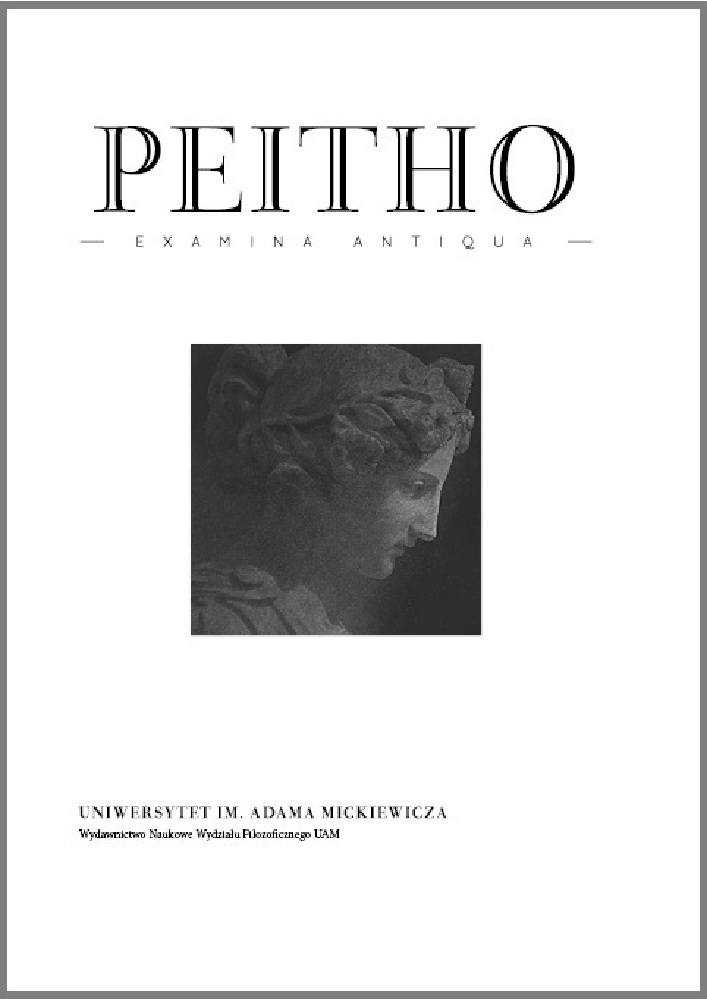Abstract
Plato’s dialogues can be regarded as the most important documents of the extraordinary mimetic power of visual writing, i.e., writing capable of “showing” and “drawing images” by using words only. Thanks to the great lesson of the Attic theater, Plato makes his readers see: when reading the dialogues, they see not only the characters talking but owing to the visual power of mimetic writing, they also see that which the characters are actually talking about. There are numerous rhetorical devices employed by Plato the writer that make this visual rendering of philosophy possible. In this text, I would like to bring an example from the Meno that illustrates the visual power of an implicit comparison. By “implicit comparison”, I mean the special kind of comparison that is not presented explicitly and fully in the text but that the text merely evokes and that, once evoked, contributes to determining the formation of the image.
References
Bénatouil, T., El Murr, D., 2010, “L’Academie et les géomètres”, Philosophie antique 10, pp. 41–80.
Bluck, R. S., 1961, Plato’s Meno, Cambridge.
Bonazzi, M., 2010, Platone, Menone, Torino.
Canto-Sperber, M., 1993, Platon, Ménon, Paris.
Casertano, G., 2004, “La struttura del dialogo (o di quando la filosofia si fa teatro)”, in: G. Casertano (cur.), Il Protagora di Platone: struttura e problematiche, Napoli, pp. 729–766.
Cattanei, E., 2007, “Due geometrie per il Menone”, in: M. Erler L. Brisson (eds.), Gorgias – Menon. Selected Papers from the Seventh Symposium Platonicum, Sankt Augustin, pp. 248–252.
Chappell, T., 1996, The Plato Reader, Edinburgh.
Cotton, A. K., 2015, Platonic Dialogue and the Education of the Reader, Oxford.
Delcomminette, S., 2013, “Exemple, analogie et paradigme. Le paradigmatisme dialectique de Platon”, Philosophie antique 13, pp. 147–169.
Ebert, T., 1973, “Plato’s Theory of Recollection Reconsidered: An Interpretation of Meno 80a–86c”, Man and World 6, pp. 163–181.
Ferrari, F., 2016, 2016, Platone, Menone, Milano.
Fine, G., 1992, “Inquiry in the Meno”, in: R. Kraut (ed.), The Cambridge Companion to Plato, Cambridge, pp. 200–226.
Giannantoni, G., 1981, I Presocratici. Testimonianze e frammenti, Roma–Bari.
Gill, M. L., 2012, Philosophos. Plato’s Missing Dialogue, Oxford.
Gonzales, F. J., 2007, “How is the truth of beings in the soul? Interpreting anamnesis in Plato”, Elenchos 28, pp. 275–301.
Halperin, D. M., 1992, “Plato and the Erotics of Narrativity”, in: J. C. Klagge (ed.) Methods of Interpreting Plato and his Dialogues, Oxford, pp. 93–130.
Irwin, T., 1977, Plato’s Moral Theory. The Early and Middle Dialogues, Oxford.
Klein, J., 1965, A Commentary on Plato’s Meno, Chicago–London.
Klein, J., 1977, Plato’s Trilogy. “Theaetetus”, the “Sophist” and the “Statesman”, Chicago.
Montano, A., 2014, Methodos. Aspetti dei metodi e dei processi cognitivi nella Grecia Antica, Napoli.
Napolitano Valditara, L. M., 2007, “Anamnesi e dialettica nel Menone”, in: M. Erler L. Brisson (eds.), Gorgias – Menon. Selected Papers from the Seventh Symposium Platonicum, Sankt Augustin, pp. 204–211.
Nehamas, A., 1994, “Meno’s Paradox and Socrates as a teacher”, in: J. M. Day (ed.), Plato’s Meno in focus, London–New York, pp. 221–248.
Palumbo, L., 2004, “Socrate, Ippocrate e il vestibolo dell’anima”, in: G. Casertano (cur.), Il Protagora di Platone: struttura e problematiche, Napoli, pp. 87–103.
Scott, D., 2006, Plato’s Meno, Cambridge.
Tuozzo, T. M., 2007, “Knowing Meno Blindfolded: The Dialectic of Essence and Quality in the Meno”, in: M. Erler L. Brisson (eds.), Gorgias – Menon. Selected Papers from the Seventh Symposium Platonicum, Sankt Augustin, pp. 243–247.
Vlastos, G., 1965, ”Anamnesis in the Meno”, Dialogue 4, pp. 143–167.
Wesoły, M., 2004, “La salvezza della vita : ‘un’arte e una scienza del misurare’”, in: G. Casertano (cur.), Il Protagora di Platone: struttura e problematiche, Napoli, pp. 513–527.
Wesoły, M., 2013, “La «Dimostrazione propria» di Gorgia”, Peitho. Examina antiqua 4, pp. 159–188.
License
Peitho provides immediate open access to its content on the principle that making research freely available to the public supports a greater global exchange of knowledge.
